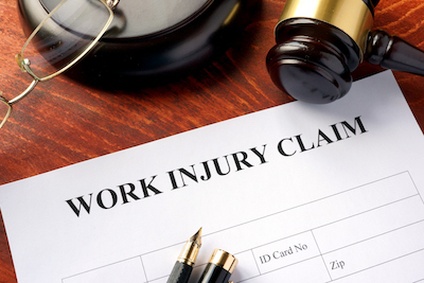Is Your Workers’ Comp Claim a Third-Party Personal Injury Claim, Too?
When you’re injured on the job, the most immediate course for reimbursement is workers’ compensation. But, if a third party is at fault, you might also be entitled to additional damages from a separate personal injury claim against that individual or business. Read on to learn more about the relationship between a first-party workers’ comp claim and a third party personal injury claim.
How a First-Party Workers’ Comp Claim Works
In traditional workers’ compensation, an employee injured in the course and scope of employment is entitled to benefits provided by the employer, usually through an insurance company. The benefits typically include reimbursement for medical costs and a portion of the lost earnings resulting from the injury.
Workers’ compensation is no-fault coverage, meaning it does not matter whether the employer (or injured employee) is responsible for the accident; if you were hurt at work, you can receive workers’ comp. It’s important to understand that a workers’ comp claim is not a lawsuit against an employer, but rather a claim administered by an insurance company and overseen by a government agency.
What Happens When a Third Party is Responsible for the Accident?
Sometimes, workers’ compensation is the exclusive remedy for an on-the-job injury. However, many accidents also involve a negligent third party. Here are a few examples:
- A mail carrier gets in a wreck on the freeway because another driver cuts them off.
- An industrial worker is in an accident at a construction site because of an engineer’s error.
- A grocery clerk walking into the store slips on a smashed banana left by the produce delivery company.
- A clerical worker is injured by a defective paper shredder.
With these examples in mind, it becomes clear that many first-party workers’ comp claims have the potential to cross over into third-party territory. If it is suspected that a third party is at fault, the employee and their employer can file a personal injury claim against the individual or company at fault.
How a Third-Party/Workers’ Comp Crossover Claim Works
A third-party case does not replace the original first-party workers’ comp claim. The two claims are pursued separately and simultaneously. The injured worker immediately receives benefits from the workers’ comp claim while the third-party claim is being litigated.
When both a workers’ comp and a third-party claim are being pursued, the carrier paying workers’ comp benefits claims a lien on the employee’s third-party claim for the amount they have paid. For example, if an employer paid $10k in medical bills and $5k in indemnity (i.e. lost wages), they are entitled to a $15k lien on a successful third-party claim.
Things are more complicated when the workers’ comp claim is still open at the time the third-party case resolves. Under these circumstances, the workers’ comp carrier can claim a credit for the cost of future treatment. As a result, it’s vital to have an attorney who knows how to protect your workers’ comp benefits by securing an outside agreement with the workers’ comp carrier.
Why Pursue a Third-Party Workers’ Comp Claim?
The biggest shortcoming of a first-party workers’ comp claim is that it does not cover non-economic damages, or the “pain and suffering” that plaintiffs usually seek in personal injury claims, including:
- Physical pain
- Mental suffering
- Loss of enjoyment of life
- Disfigurement
- Physical Impairment
- Inconvenience
- Grief
- Anxiety
- Emotional Distress
Third-party claims have a greater measure of damages, including the remaining portion of lost earnings not covered by workers’ compensation. A workers’ comp claim for $15k might be worth $50k in a third-party claim. For this reason, it is highly recommended that you ask your workers’ comp attorney whether you also have third-party claim worth pursuing.
With expertise and experience necessary to navigate the complexities of third-party/workers’ comp crossover claims, The Law Offices of Belgum, Fry & Van Allen can work with you and your workers’ comp attorney to ensure you pursue the compensation you deserve. If you were recently injured at work, call us today at 626-914-9806.




